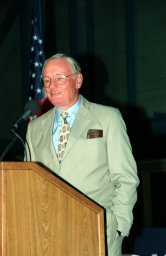Most people find astronauts fascinating. Their experience is so far beyond anything most of us can understand or hope to experience ourselves. They have unique stories to tell, none more so than the Apollo astronauts, and especially the Moon-walkers. Top of that list, of course, is  Neil Armstrong, the first human to set foot on another body, another world, the Moon.
Neil Armstrong, the first human to set foot on another body, another world, the Moon.
I recently read the first authorised biography First Man, by James Hansen. This is a hugely enjoyable book. Armstrong has the reputation of a recluse, but that is to misunderstand him. We all define him by his command of Apollo 11 and his status as First Man. Armstrong seems to define himself as an engineer.
Realising he had peaked at NASA he left in 1971, just two years after leaving the Sea of Tranquility and began a career as an academic at the University of Cincinnati teaching engineering. Hardly a choice for a recluse. He then went into business, and in 1986 served on the Rogers Commision investigating the Challenger Shuttle accident, acting as Vice-chair. He has served ont he boards of several companies.
Armstrong carries a huge expecation from the world. The only way to deal with it is to withdraw from public life. We are used to celebrity on tap, but I think Armstrong has it about right. He has managed to maintain a private life and carefully rations his public appearances, knowing his own value. He doesn’t sign autographs, or even sign letters, fed up with the way such items are hawked around the world. He allowed this biography because it was time, and he had seen some of Hansen’s previous work, and trusted him. I think his trust has been repaid. It has been worth the wait.
He keeps his views to himself, and has not been tempted into political life. He considers very carefully what he says, a reputation he has had since his days as a fighter pilot in the Korean War. It is the engineer in him. Everything is analysed and balanced.
Armstrong still considers his work on the X-15 project as on a par with his Gemini and Apollo work. He was a test pilot and he always saw these projects as test flights, which is what they were. Apollo 11 was the ultimate test flight, and Armstrong proved his piloting and engineering skills at their best in planning the flight and executing the landing. Armstrong doesn’t consider himself particularly special for walking on the Moon, it was just another test flight.
 Hansen’s biography is superb. He draws the humanity of Armstrong in a way that the mythology and iconography never can. Perhaps it is fortunate that there are no good photographs of Armstrong on the Moon (the famous one is of Aldrin, taken by Armstrong). He is a man whose fame is based on One Small Step, but the mystery is sustained. Hansen has taken the key from the keyhole so we can have a peep.
Hansen’s biography is superb. He draws the humanity of Armstrong in a way that the mythology and iconography never can. Perhaps it is fortunate that there are no good photographs of Armstrong on the Moon (the famous one is of Aldrin, taken by Armstrong). He is a man whose fame is based on One Small Step, but the mystery is sustained. Hansen has taken the key from the keyhole so we can have a peep.
My definition of a hero is someone who I’d cross the street to shake hands with. Armstrong is one of the few.
